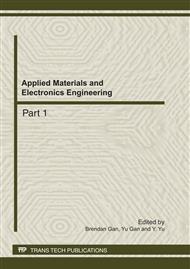p.580
p.585
p.589
p.593
p.597
p.601
p.606
p.610
p.614
Microstructural Evolution during Accumulative Roll-Bonding Process of a High Performance Copper Alloy
Abstract:
Microstructural evolution of a copper alloy processed by accumulative roll-bonding (ARB) was investigated by EBSD analysis. The grains became thinner and elongated to the rolling direction with increasing the number of ARB cycles. The subdivision of the grains to the rolling direction actively begins to occur after 5 cycles of the ARB, resulting in formation of ultrafine grains with small aspect ratio. After 8 cycles, the ultrafine grained structure with the average grain diameter of 250nm developed in almost whole regions of the sample. In addition, the fraction of high-angle grain boundaries increased with the number of ARB cycles and reached about 0.7 after 8 cycles. The texture development of the ARB processed samples was different depending on the number of ARB cycles and the positions in the thickness.
Info:
Periodical:
Pages:
597-600
Citation:
Online since:
October 2011
Authors:
Price:
Сopyright:
© 2012 Trans Tech Publications Ltd. All Rights Reserved
Share:
Citation:


